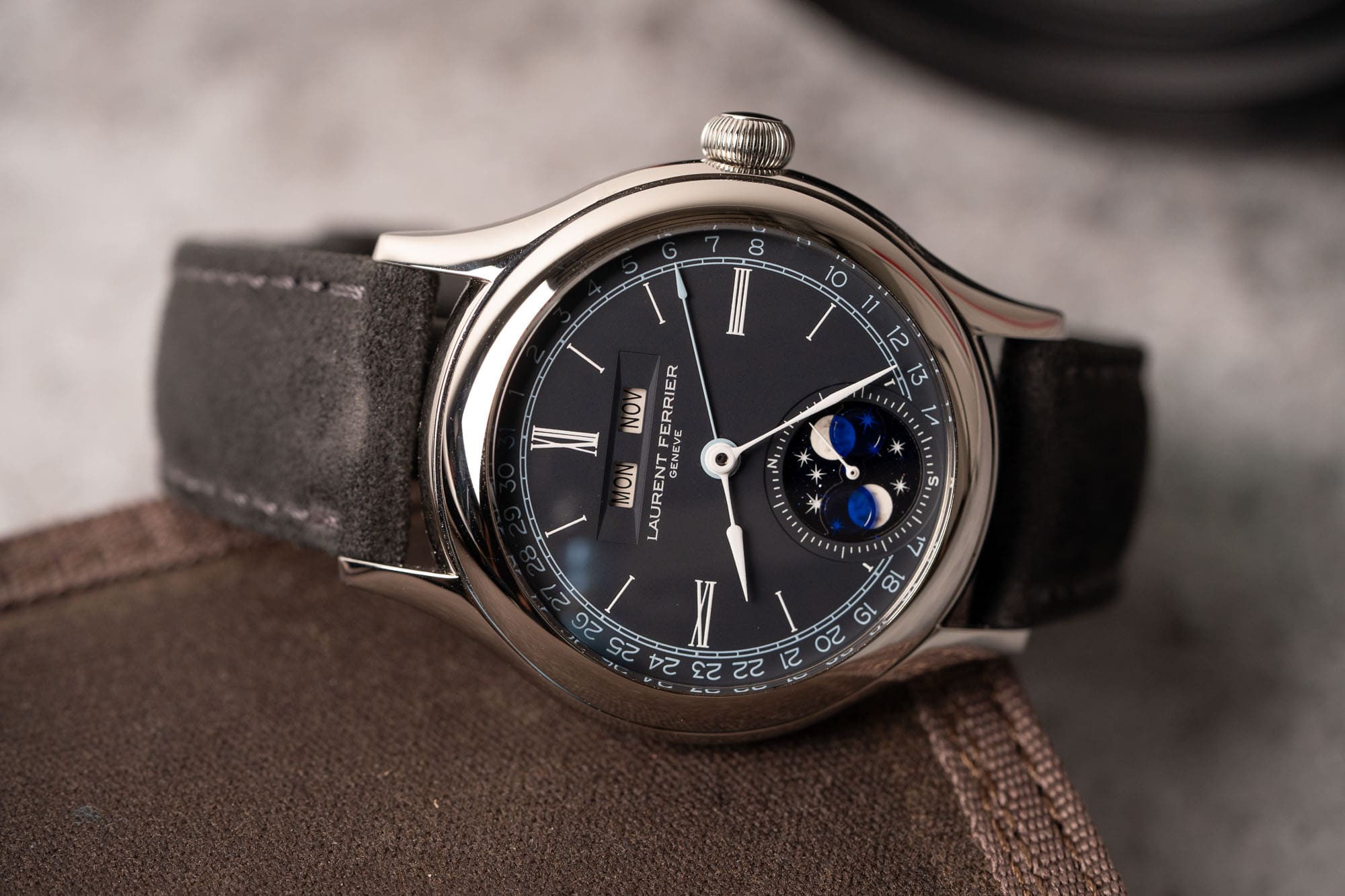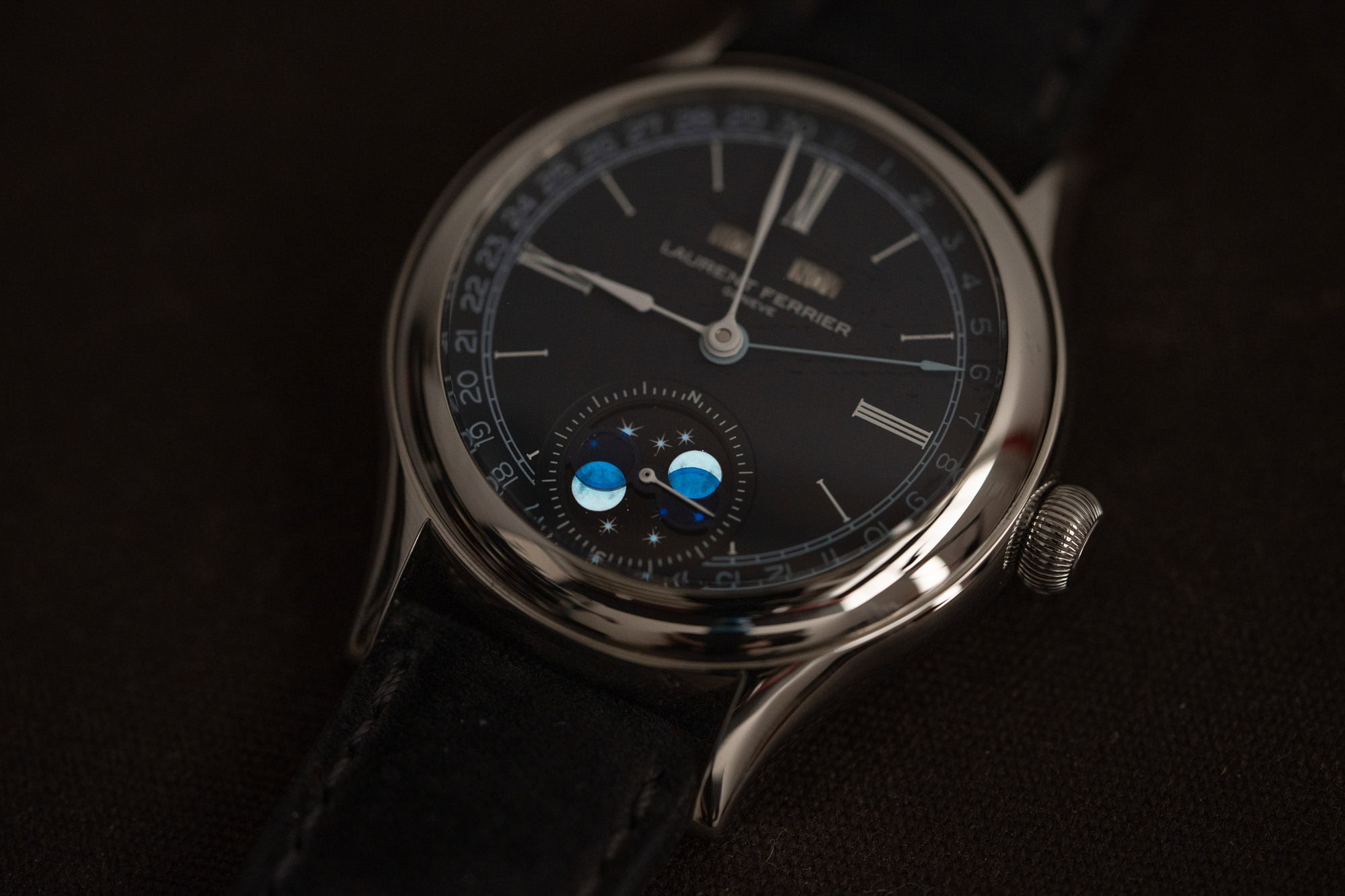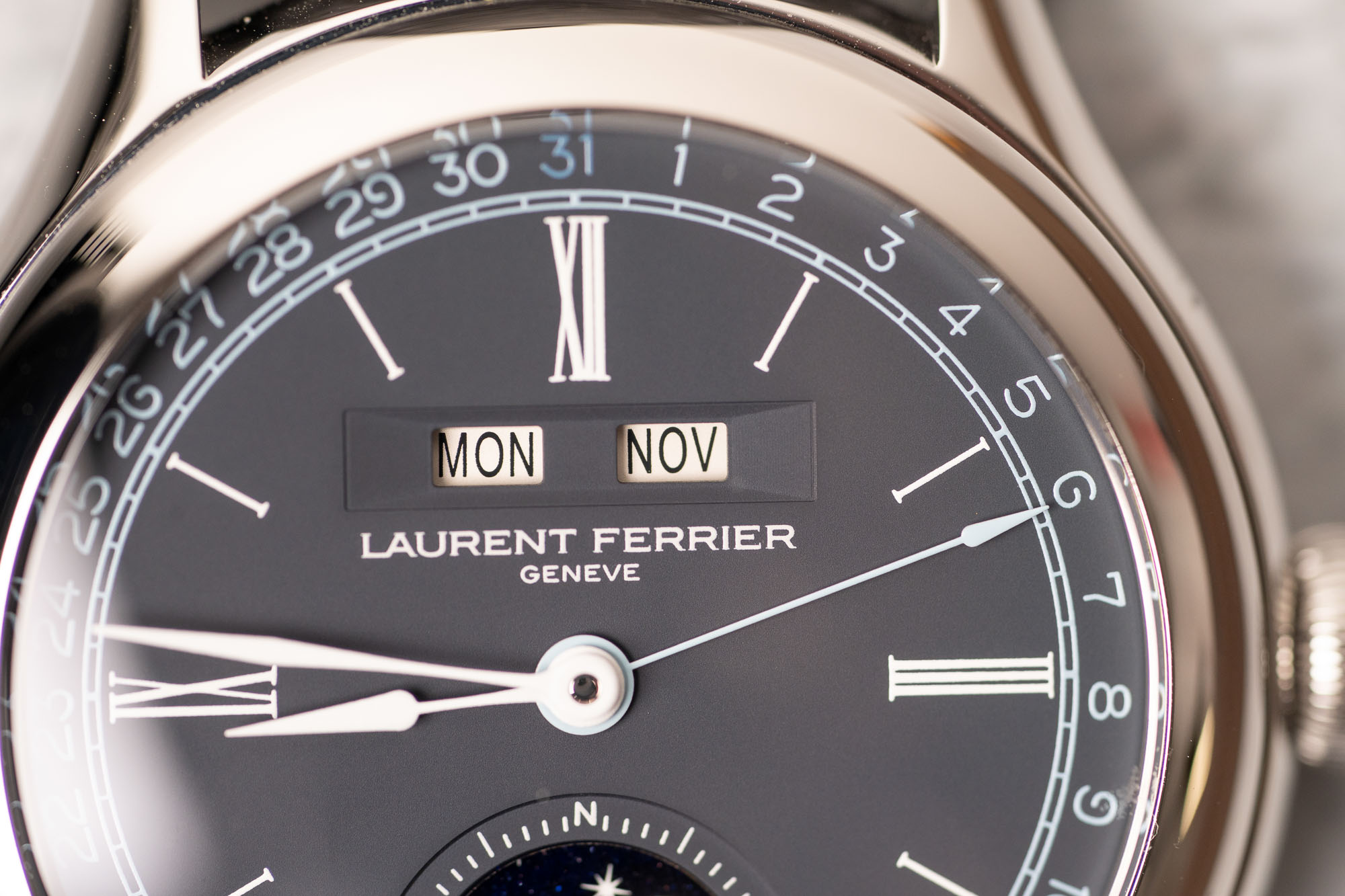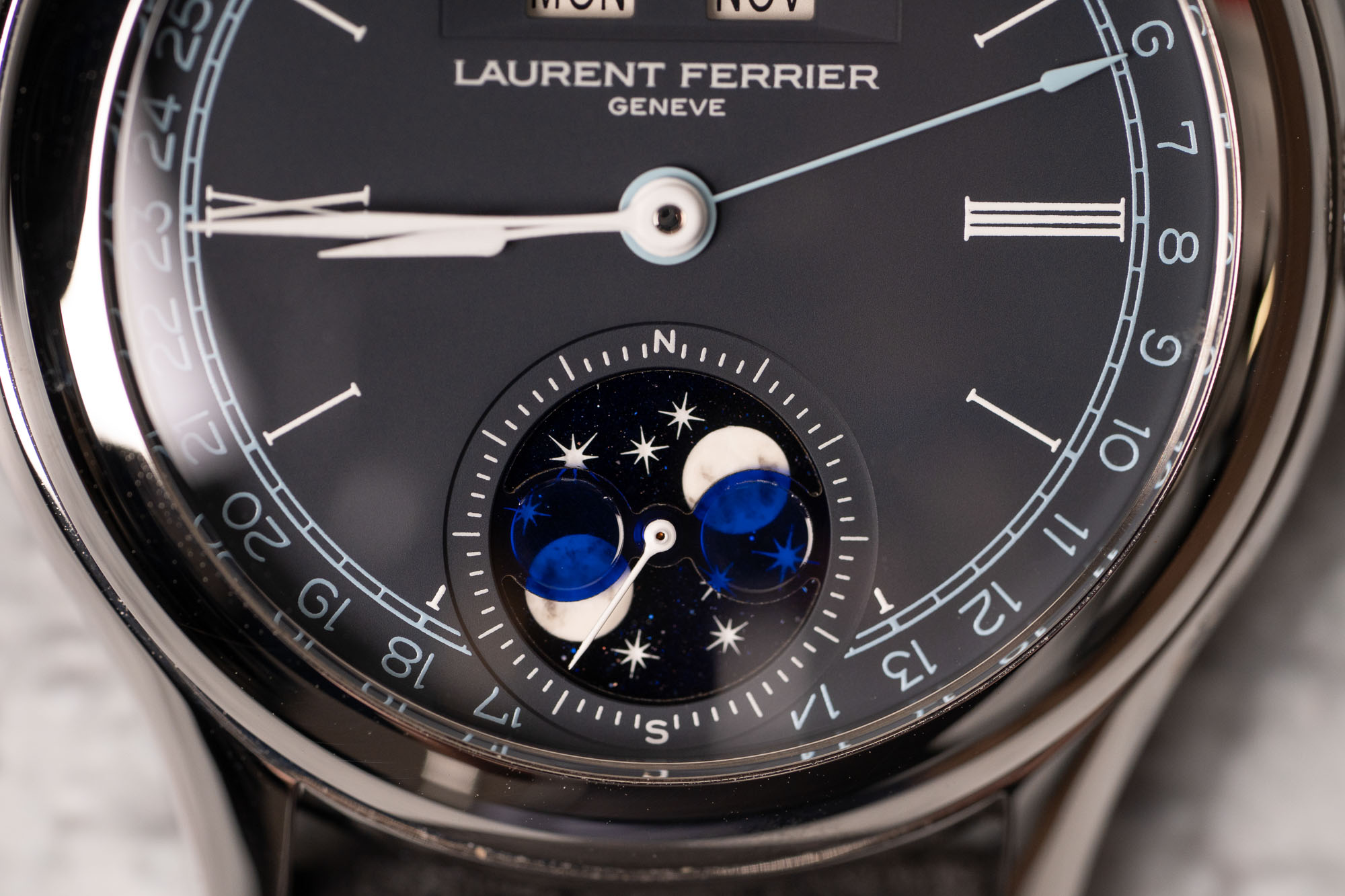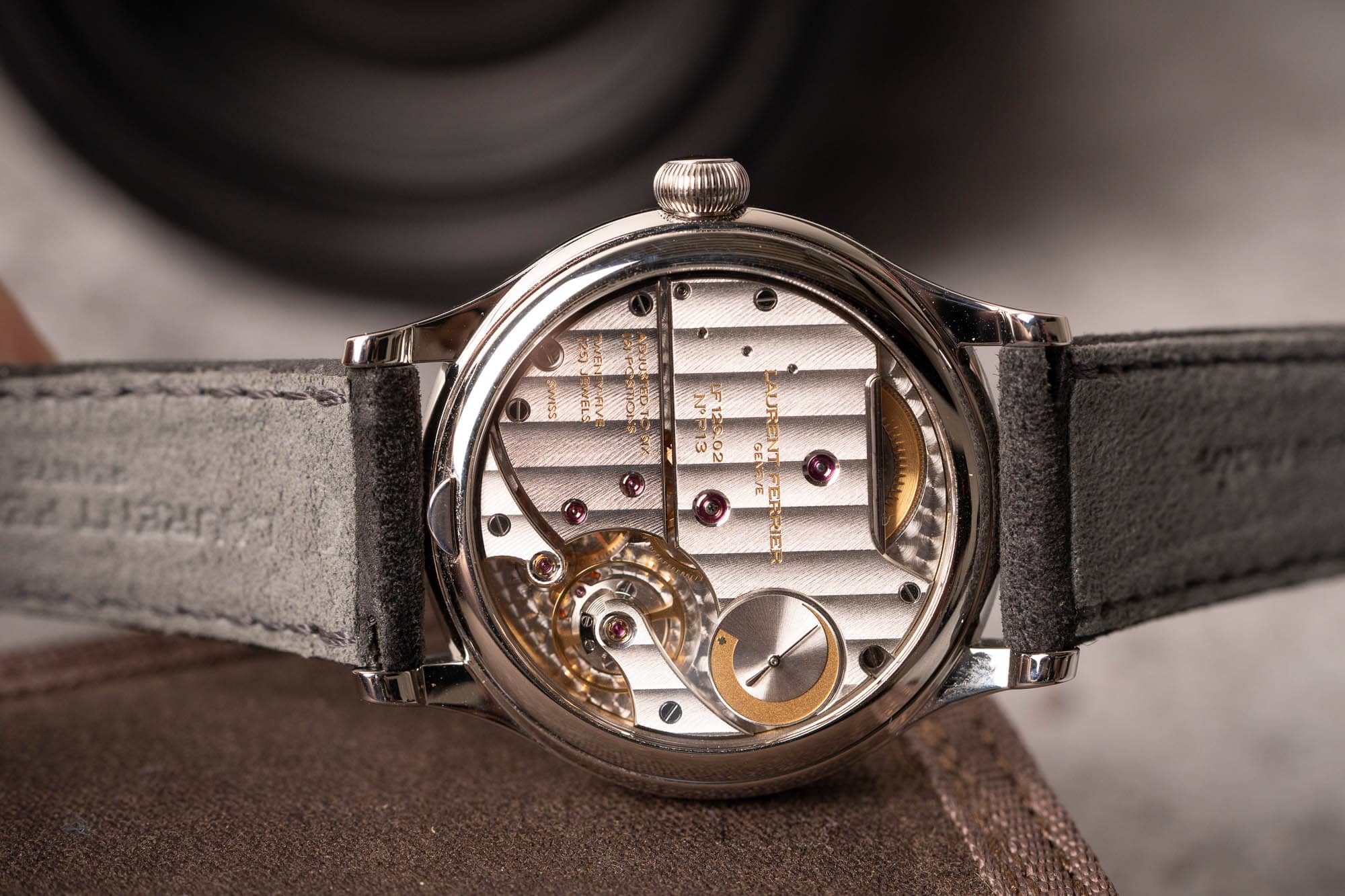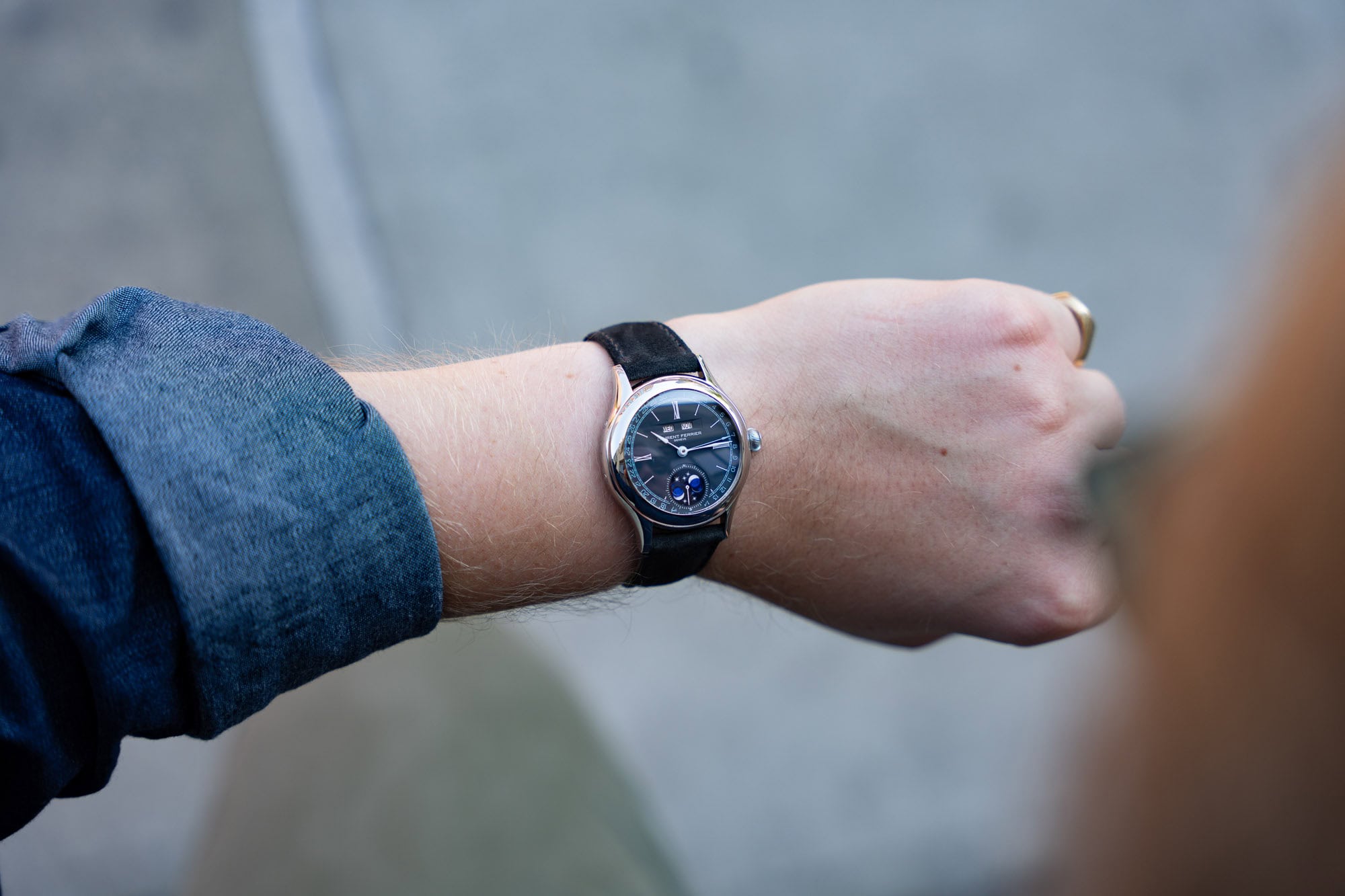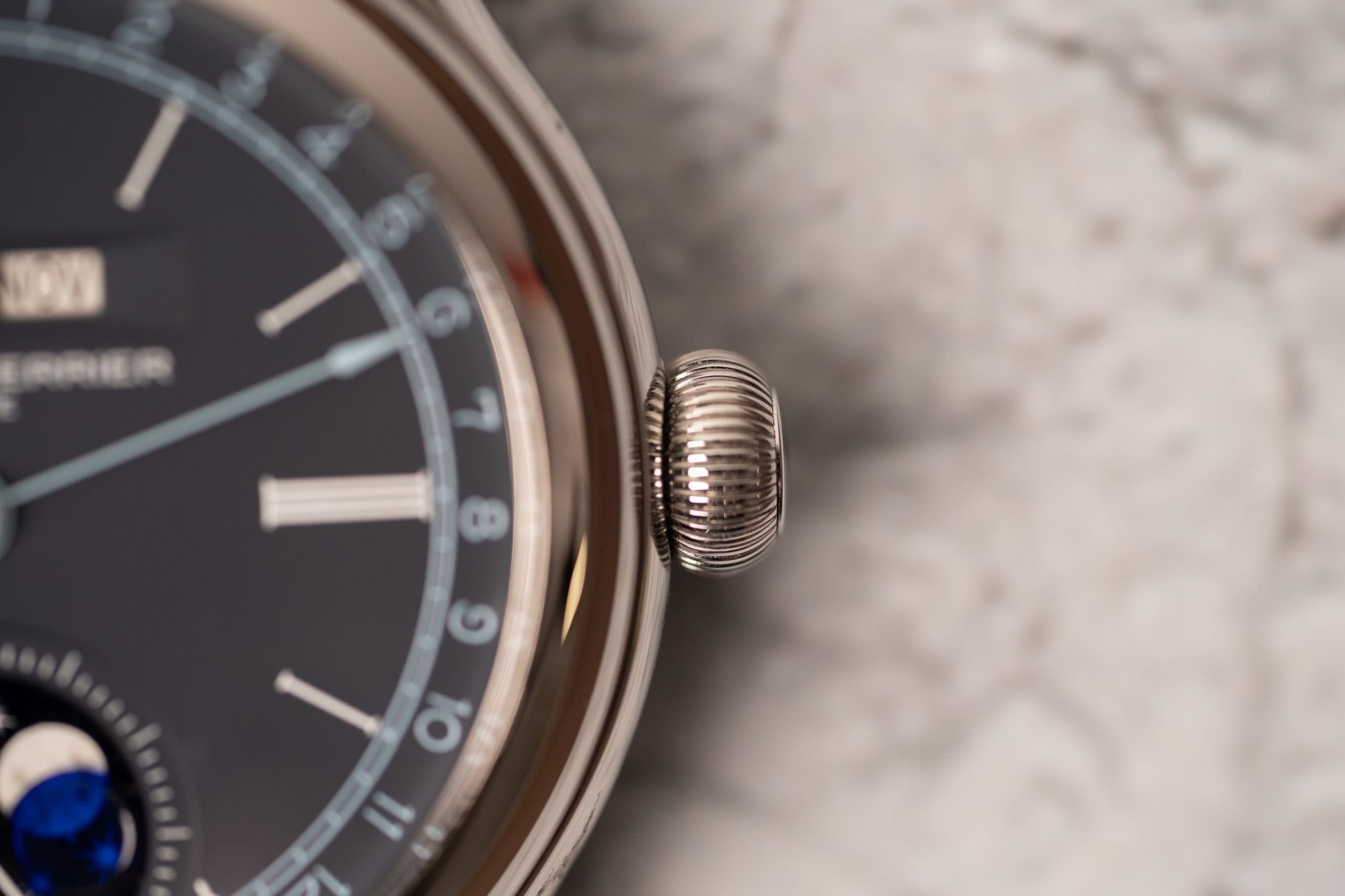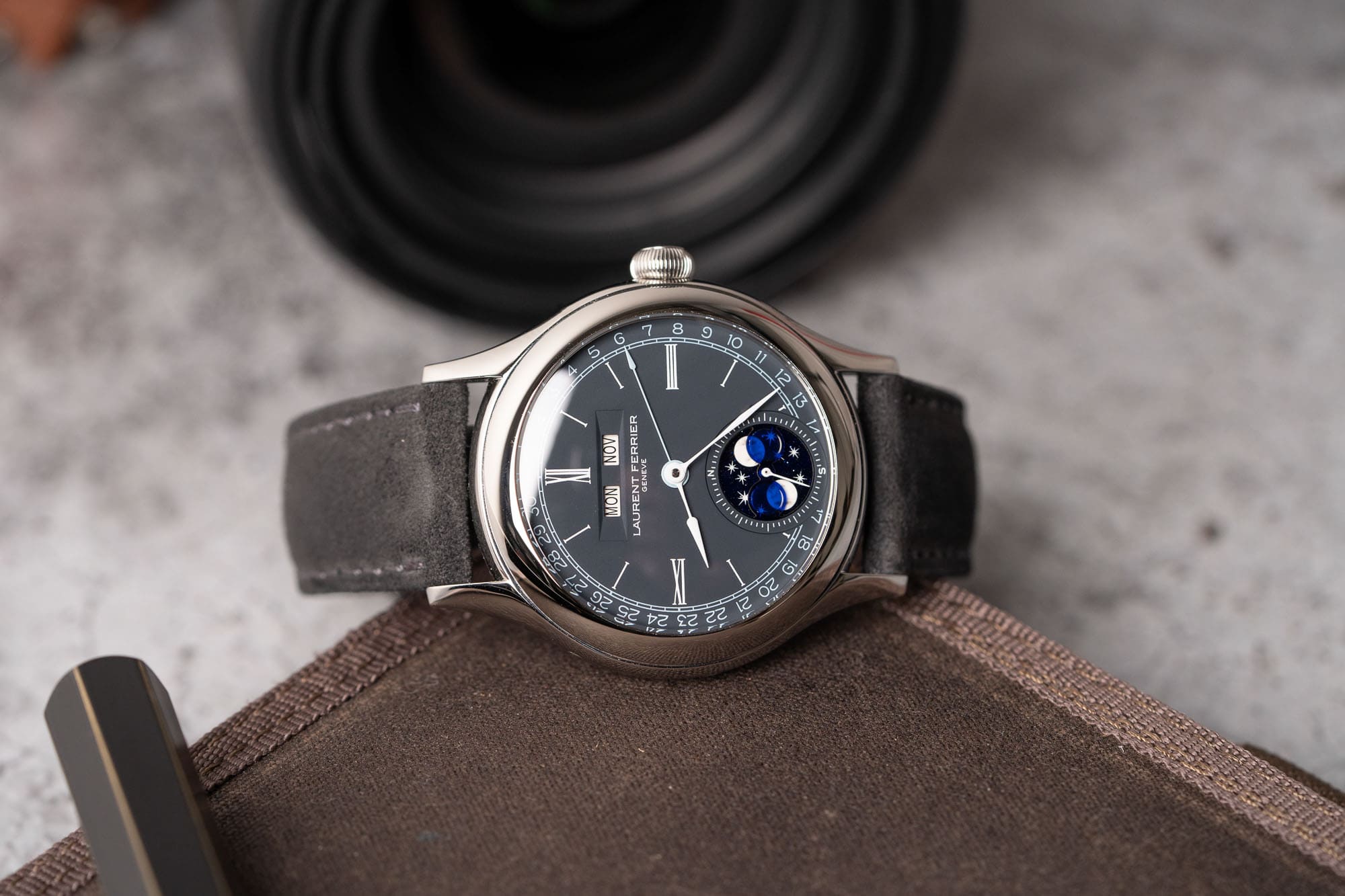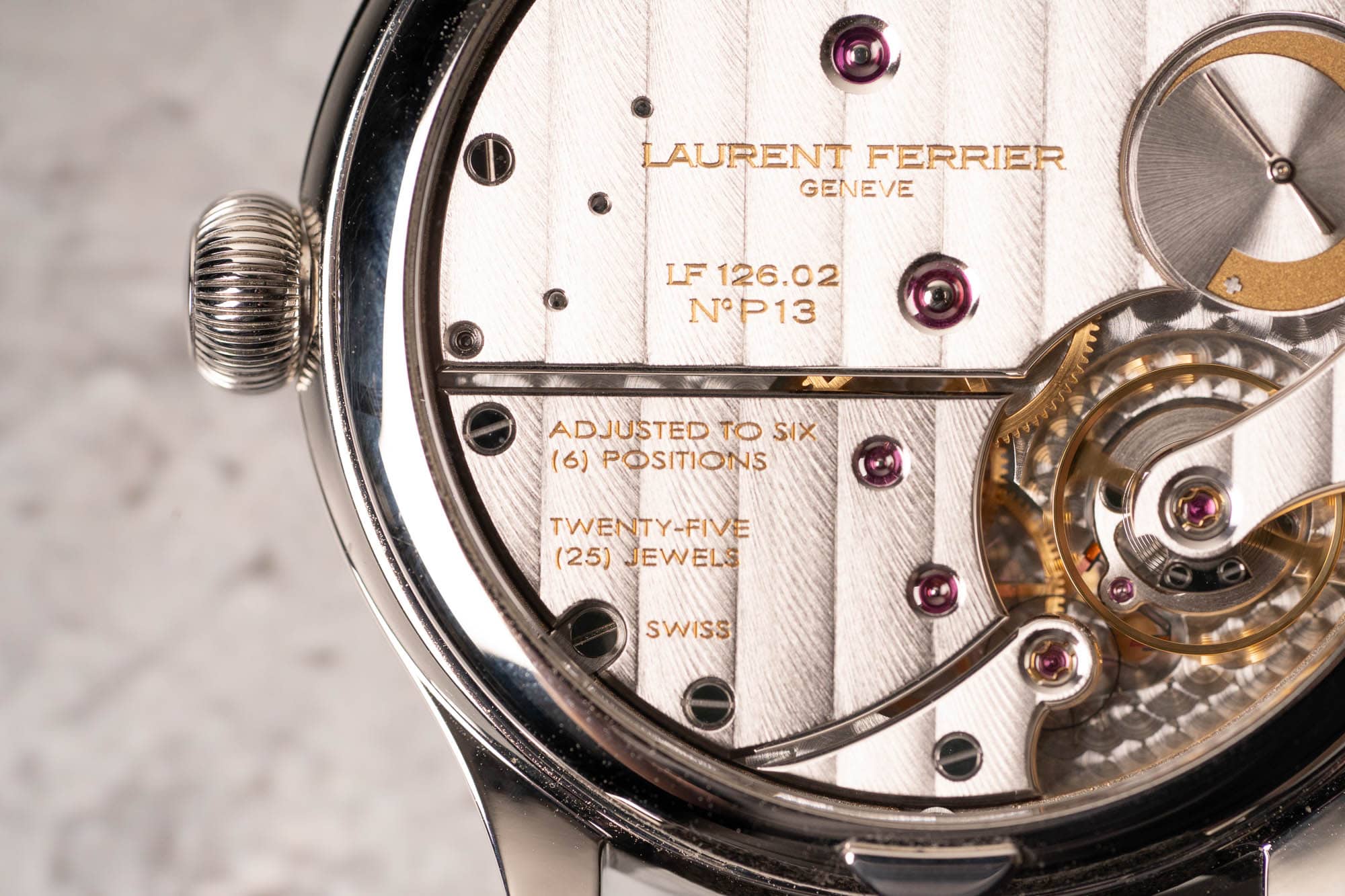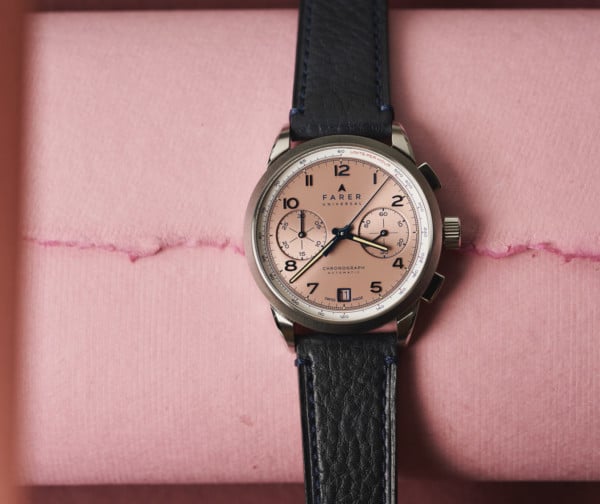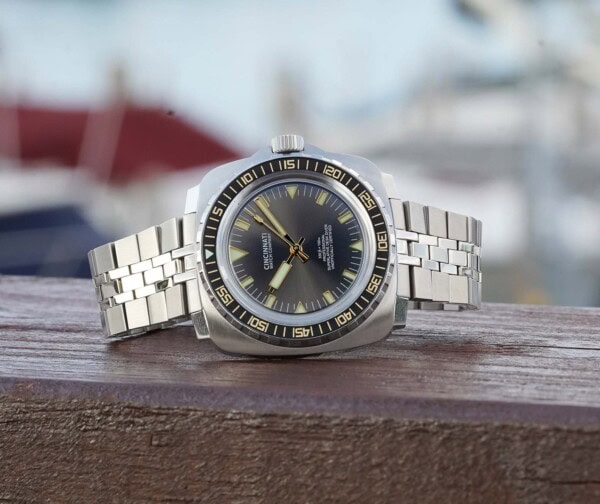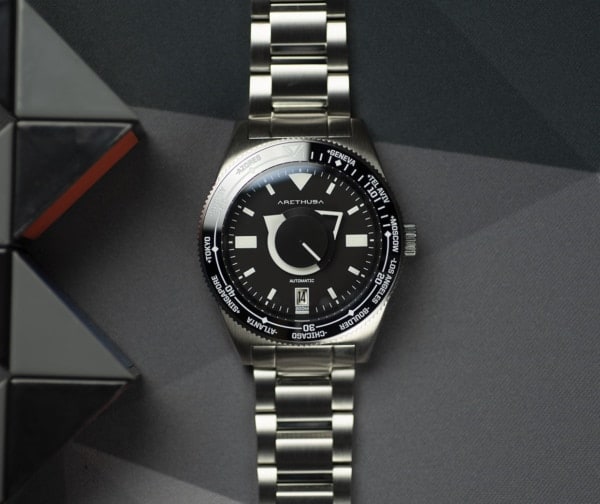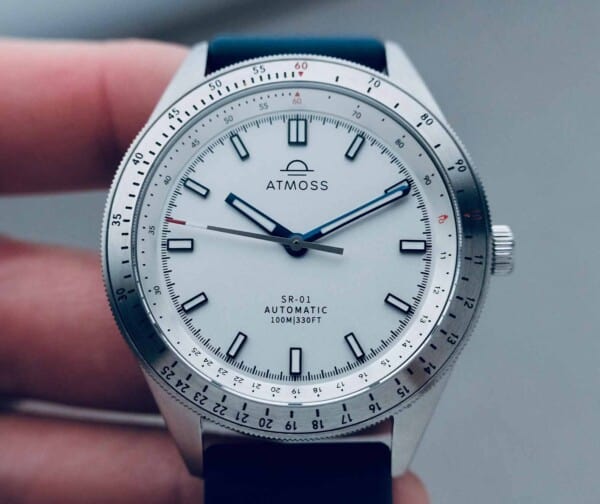After rejoining Patek in 1974, Ferrier would remain there for 37 years, helping to transform the brand into the modern powerhouse it is today. He eventually left Patek in 2009 to start his own eponymous brand, with the backing and support of a friend from his racing days, François Servanin. The brand Laurent Ferrier got off to a roaring start, winning the Men’s Prize at the GPHG with its very first watch, the Gallet Classic Tourbillon Double Spiral.
In the fifteen years since, Laurent Ferrier has continued to draw admiration from collectors and journalists, and his offering of watches has evolved and expanded, both in presentation and complication. This decade and a half of development seems to have culminated, at least for now, with the Classic Moon, Ferrier’s latest complicated piece, and an evolution of 2018’s Laurent Ferrier Galet Annual Calendar School Piece (which, incidentally, won the Men’s Complication Prize at that year’s GPHG — the academy loves the man).
![]()
The Classic Moon represents a classic interpretation of a surprisingly modern complication, with a familiar dial layout and seemingly simple formula elevated by supreme technical achievement and a rarely matched eye for detail. As I said, Laurent Ferrier introduced his first annual calendar movement in 2018 to tremendous fanfare. Ferrier himself had been at Patek Philippe for the development of the complication in the early ‘90s (the first annual calendar of any sort, the 5035, was released by Patek in 1996), and has often expressed a fondness for the annual calendar. It was only right that he should eventually interpret the complication for his own brand.
The Classic Moon has now presented the next step in that interpretation, with the big change coming in the form of an added moon phase. In his first annual calendar six years ago, Laurent Ferrier opted for a very traditional layout, drawing inspiration from classic calendar watches, with details like the pointer date evoking mid-century watches from Movado and Jaeger-LeCoultre. Adding a moon phase to the mix only accentuates this connection, though true to Laurent Ferrier, the Classic Moon would not easily be mistaken for one of these vintage pieces.
![]()
As with most watches from Laurent Ferrier, the big thing to pay attention to here is the movement. The Classic Moon is powered by the LF126.02, an evolution of the LF126.01 annual calendar movement differentiated by (you guessed it) the addition of a moon phase complication. Being an annual calendar, the Laurent Ferrier Classic Moon, if kept wound, will require intervention in the calendar only once a year, at the end of February. The movement is hand-wound, with a power reserve indicator visible through the caseback, and handsomely finished with wide Geneva stripes on the expansive bridges, plenty of bevels, and black-polished screw heads. Unfortunately for those looking for them, there are no internal angles to be found here, but you get more than enough to make up for it in my book.
![]()
On the wrist, the Classic Moon stands out by not really standing out. It wears like a glove, assuming you’re wearing a glove that fits you, with an elegantly sculptural case reminiscent not only of the soft lines found on certain classic Pateks but also of the soft, almost fluid-like shapes of Elsa Peretti jewelry or the liquid metal form of the T-1000 Terminator. The stainless steel case measures 40mm across and 12.9mm thick and sits low to the wrist. While the watch is also available in rose gold, I think steel is the way to go here.
![]()
Besides getting you what I think is the better dial option (more on that in a second), I always get excited about a highly complicated dress watch in a steel case. Something about it harkens back to the days before the Nautilus or Royal Oak when a steel complication was a genuine novelty from houses like Patek. It’s no coincidence that a 1518 in steel was, for a time, the most expensive wristwatch ever sold. The combination just works, and that remains true here.
And anyway, the blue dial of the steel-cased Classic Moon is a standout, with contrasty pale blue and white hands and printing, the grey-blue dial feels contemporary without being distracting, whereas the silver dial on the rose gold model feels a little… neutral for my taste. The Classic Moon uses the extended leaf handset found on all Laurent Ferrier Watches, paired with the drawn-out Roman numerals that have become a hallmark of the brand. I’m a big fan of this look, and the color palette used only highlights their form. Of course, the focal point of the dial this time around has got to be the moon phase aperture, which is housed inside the small seconds subdial at 6 o’clock.
![]()
At first blush, the moon phase display may seem like any other, but it’s really not. The bridge, which varies its thickness to both obscure and reveal the pair of moons sitting beneath it, is made of Grand Feu enamel. Using Grand Feu enamel is a highly challenging technique to master, with a high failure rate, and no certainty of result until the very end. It’s worth the hassle, as the darker edge and translucent center of the bridge only serve to highlight the Super-Luminova moons below.
![]()
Each of these moons in the double display (which offers a view of the moon phase as it appears in each hemisphere) is painted in luminous material, which is then engraved to produce a shockingly accurate representation of the moon’s surface. Photo-realistic moons have become an increasingly common touch on modern moon phases, and this is an undeniably excellent execution of the concept. The moons themselves are surrounded by luminous stars and are set into an Aventurine glass sub-dial. Altogether, it’s a stunning effect, and not quite like any other moon phase display I’ve encountered.
![]()
Of course, at the end of all this, the big question is why would someone spend 70,000 CHF on an annual calendar. At that price, we’re well into QP money, and there are plenty of interesting independent options for far less. I could give you the simple answer of rarity — Laurent Ferrier produces only three or four hundred watches a year, whereas competitors like F.P. Journe produce around 1000, while brands like Patek produce the better part of 70k — or highlight Laurent Ferrier’s place in the lineage of Swiss watchmaking, but that all seems like a cop-out. At the end of the day, anyone who chooses to buy the Classic Moon will do so because they love it. In my short time with the Classic Moon, I was enamored by it. I have to imagine I won’t be the only one. Laurent Ferrier









 Featured Videos
Featured Videos




